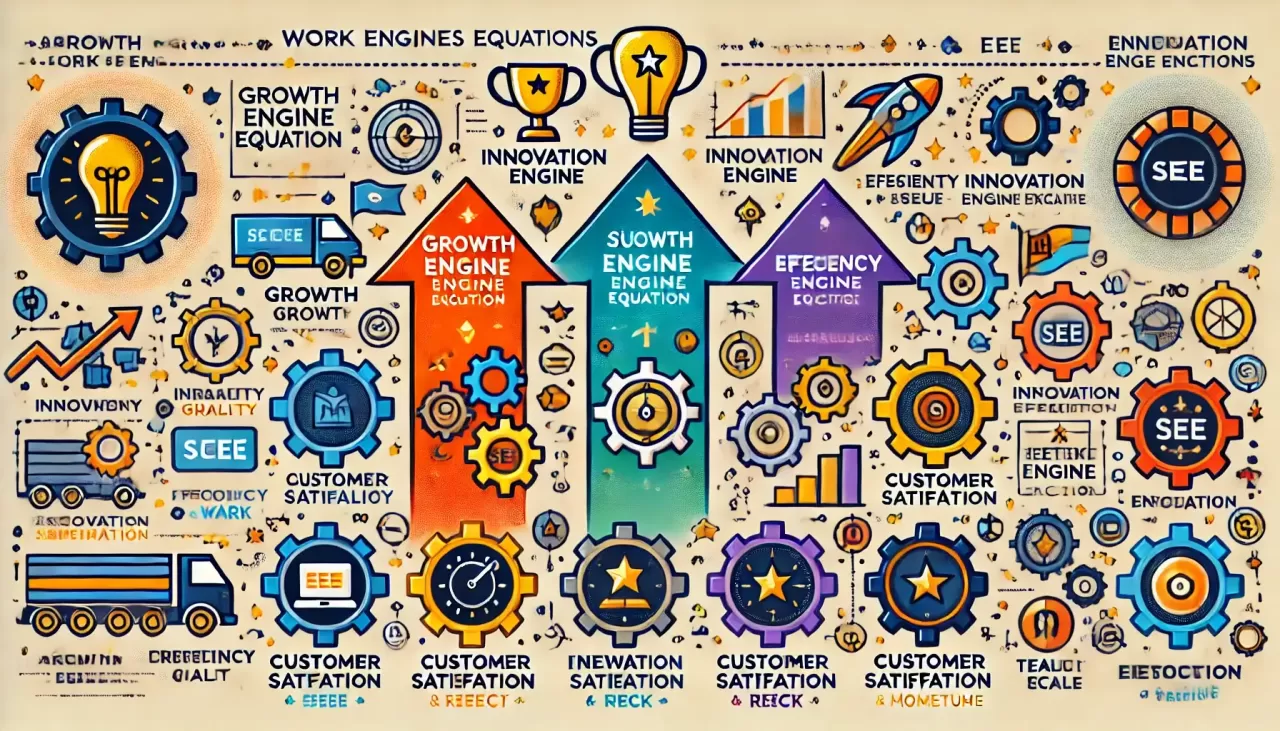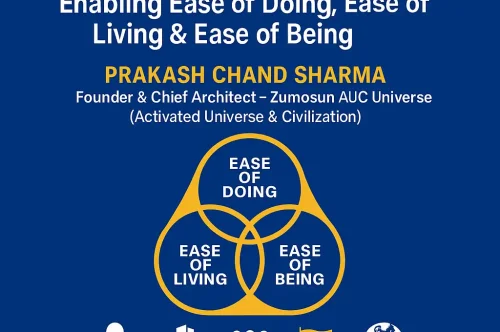What is Prakash's Work Engines Equations?

Prakash's Work Engine Equations represent a structured framework for defining and optimizing the operational and strategic dynamics within his various professional and business ecosystems, collectively known as work engines. Each equation articulates the key variables, forces, and desired outcomes of these systems, aligning them with his larger mission to address multidimensional poverty, inequality, and professional growth. By distilling complex work processes into equations, he aims to make his ecosystems replicable, scalable, and adaptable, particularly within the Zumosun Work Engines Network.
Equation:
Variables:
Description:
This equation encapsulates the idea that growth is achieved by multiplying potential with effort, and then amplifying it through respect and recognition, which boosts motivation. Finally, scaling this process increases the ecosystem's overall impact, aligning with Prakash’s mission of fostering empowerment and success.
Equation:
Variables:
Description:
The Success Engine Equation explains how value, quality, and client satisfaction contribute to success, enhanced by a continuous focus on improvement and the momentum of achievements. This equation reflects Prakash’s vision of creating value-driven and customer-centric work engines.
Equation:
Variables:
Description:
The Innovation Engine Equation highlights the role of creativity, technology, and research in driving innovation. Implementation speed and adaptive learning amplify these efforts, fostering an ecosystem that continuously evolves and remains competitive.
Equation:
Variables:
Description:
This equation emphasizes the efficiency of the ecosystem by comparing output with work invested. By introducing automation, the efficiency can be improved exponentially, reflecting Prakash’s belief in leveraging technology to enhance productivity and reduce resource wastage.
Equation:
Variables:
Description:
Resilience is the ability to recover and adapt after challenges. This equation expresses resilience as a function of resource planning and adaptability, supported by team cohesion and efficient communication to shorten recovery times. Prakash prioritizes resilience as a means of sustaining his work engines in the face of challenges.
Equation:
Variables:
Description:
Networking is fundamental to the ecosystem's success, especially in a consortium-based model. The Networking Engine Equation emphasizes building meaningful connections, high engagement, and active contributions, multiplied by the synergy created within the network.
Equation:
Variables:
Description:
Sustainability balances financial health with environmental and social responsibility. By maximizing revenue and impact while minimizing ecological expenses, this equation aligns with Prakash’s goal of creating ecosystems that contribute positively to both business and society.
Equation:
Variables:
Description:
This equation defines empowerment as a combination of skills development, resource allocation, and opportunities for growth. Dignity and respect are critical for sustaining motivation, reflecting Prakash's belief in fostering environments where individuals and communities thrive.
Prakash's Work Engine Equations serve as the theoretical foundation for operationalizing his business goals within the Zumosun Network and beyond. By establishing equations, he creates a consistent model for assessing progress, making adjustments, and guiding strategy across various domains like technology, digital marketing, legal work, and property management. These equations provide a structured pathway to optimize productivity, enhance resilience, foster collaboration, and achieve sustainable growth.
Filter products by location

Join our subscribers list to get the latest news, updates and special offers directly in your inbox
This site uses cookies. By continuing to browse the site, you are agreeing to our use of cookies.


